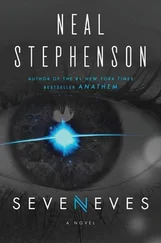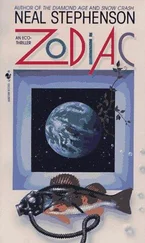They stopped here so that Chet could gather his strength. He had been consuming water at an alarming rate and still complained of thirst. “You go down this adit for, I don’t know, a hundred feet, and you’ll come to a shaft in the floor of a chamber. Should be a steel ladder. Used to be a hoist, but it’s busted now. Down the ladder all the way to the bottom. About fifty rungs. That gets you into an adit that takes you out to another intersection like this one.”
“Does this mean you’re not coming with me?”
“Just a figure of speech,” he said, after a pause to consider it. “Just gathering my energy for that damned ladder.”
It was more or less as Chet had predicted. The chamber at the end of this adit contained a surprisingly large machine that must have been brought down in pieces and assembled here. Its most prominent feature was a giant, rusty wheel with cables running over grooves in its rim and descending into the hole below. Obviously the thing hadn’t moved in eons and so Zula, had she been a recreational spelunker, would have given up and turned around at this point. But Chet insisted, and more Day-Glo-green graffiti affirmed, that there was a way down. She followed him around to the back side of the machine. She began to collect that the shaft below them was circular in cross section, but that the circle had been parceled out into a bundle of separate squarish or rectangular passageways. The largest of these was in the middle and was serviced by the giant wheel, but smaller ones seemed to be reserved for other purposes such as cabling, ventilation, dumbwaiter-like rigs for carrying ore, and the ladder that could be used when nothing else was functioning. Chet gave the top of this a good careful look, inspecting for booby traps. Then he undid his belt, threaded it through the wrist loop on his flashlight, and rebuckled it so that the light would dangle in front of his crotch and the beam would shine downward. He began to descend the ladder with such speed that Zula feared he was falling, rather than climbing. She got the sense that he just wanted to get this over with. Perhaps he was expecting to find a booby trap at the bottom and wanted to set it off long before she got there. This didn’t give her a lot of incentive to move quickly. Gripping her flashlight in one fist so that it shone downward, she began to descend the ladder, and quickly found herself in an environment that would have been violently claustrophobic had she been disposed to such feelings. Space in the shaft was apparently precious and the engineers didn’t want to sacrifice any more than was absolutely necessary to this purpose. Her pack kept getting wedged against the wall behind her, or hung up on brackets, forcing her to push back a little wave of panic each time.
“I think there’s another booby trap,” she said, passing by a fresh annotation in green spray paint.
“I saw it too,” he announced. “Hold on for a second.”
She stopped and forced herself to look down. Chet was hanging from a rung near the bottom, unfolding his Leatherman. She heard a crisp snip as it severed a piano wire, and then several seconds of absolute silence as they both waited for a detonation.
“I think we’re good,” he announced.
They had made no effort to hide this one: it was a curved rectangular slab, simply lying on the floor at the base of the ladder, lashed into place with zip ties. “Claymore,” Chet announced. “Aimed straight up. Would have taken out anyone on the ladder.”
“How are you doing?” Zula asked him, since there didn’t seem to be much more to say on that topic.
“Not bad!” Chet said, sounding a bit surprised. “Going to sit down and take a little rest. I’ll meet you at the drift intersection up thataway.” He waved his flashlight beam down one of three adits that radiated away from the base of the shaft. “Go about a hundred feet, we’ll be taking the second adit on the left.”
Zula had been noticing that Chet’s condition improved markedly when something happened to trigger an adrenaline surge and declined during uneventful parts of the journey. At the moment he seemed quite energetic, so she was surprised that he was now requesting a break; but perhaps this was just his polite way of saying that he wanted her to leave him alone so that he could take a leak. Certainly he had been drinking enough water. So she walked up the adit to the second hole on the left and smelled and saw more graffiti. But she smelled something else as well: a current of fresh air coming down from that direction.
She tried shutting off her flashlight and letting her eyes adjust, and she convinced herself that she could see faint gleams of daylight ricocheting from the tunnel’s moisture-slickened walls.
Which was obliterated by a wash of glare from Chet’s flashlight. He had finished his potty break, or whatever, and was bringing up the rear. Moving heavily again, lurching frequently to the side, as if he needed the wall of the adit to hold him up. He had zipped up his leather jacket as if to ward off a sudden chill.
“This is the way out,” Zula said, announcing as much as asking it.
“You can find the way out from here,” Chet confirmed. “Just go slow and look for booby traps.”
He allowed her, now, to lead the way. She moved forward about fifty feet, then waited for him to catch up, then did it again. She came to another intersection, but it was obvious which way to go, for light and air were unmistakably coming up the tunnel now. She began to proceed at an extremely deliberate pace, just barely staying ahead of Chet. There was no point in getting too far out in front of him, since she just had to wait for him to catch up, and going slowly gave her more time to look for booby traps. They came to what must be the main adit leading southward out of the mine and found a flatbed car that was still capable of rolling down the rails bolted into its floor. Zula, after inspecting it for piano wires and Claymore mines, insisted that Chet sit down on it. She got her hands on his shoulders and pushed him along down the rails for a surprisingly long time, the brightness ahead of them increasing every time they came to a bend in the tunnel, and finally came around a curve and were blinded by the almost direct light of the sun shining into the mine’s southern entrance. It seemed an obvious place to put a third booby trap, and they were too dazzled to see, so they waited there for a few minutes, eating snacks and letting Chet guzzle another bottle of water. Then Chet got to his feet, and they took the tunnel’s last hundred yards one cautious step at a time.
The last booby trap was a simple tripwire stretched from wall to wall at ankle level, just a few yards short of the exit, where hikers impatient to get out of this place would be tempted to break out into a long stride. Chet insisted that Zula step over it and then get all the way out of danger before he snipped it with his Leatherman. He was afraid that it was some sort of particularly fiendish IED that would detonate when the wire was cut. But nothing happened, and Chet staggered out of the tunnel a few moments later looking like the ghost of a miner who had died in the heart of the mountain a hundred years ago.
They had traveled less than a mile as the crow flew, but entered into a different world. Zula inferred that the prevailing winds must bring wet air from the Pacific up from the south to deposit loads of rain in the valley that now stretched out before them. For the air was palpably moister than what they’d been breathing on the Schloss side of the ridge, and the vegetation was of an altogether different biome. They had entered the mine in an arid wasteland of talus and emerged in the middle of something that was close to being a rain forest.
And a wilderness. There was no graffiti, no party trash at this end. A fire ring stood nearby, and around it were some flat spots where it looked as though backpackers might pitch tents when they ventured up here. But compared to the other side, only a short drive from the town of Elphinstone and a short hike from the comforts of the Schloss, this place was out in the middle of nowhere, a shred of territory caught between the U.S. border and the nearly uncrossable barrier of the ridge that now rose up behind them. Had the views been more spectacular, it might have attracted backpackers and mountain bikers anyway. But better vistas were to be had for less work in places like Glacier and Banff, not so many hours’ drive away, and so this place had been left alone, save by cross-border smugglers and international terrorists. Patches of snow, rounded by the spring melt, spread in the trees all around them and lapped up the slopes of the mountain, contributing to a general runoff that seeped through mud and trilled down small watercourses into cold gurgling brooks that came together, perhaps a mile below, into a river that hurtled south down the valley; and though they couldn’t see it from here, they could hear the roar of the cataract that almost coincided with the border, not marked on maps, but known to the few people who lived in these parts as American Falls.
Читать дальше





